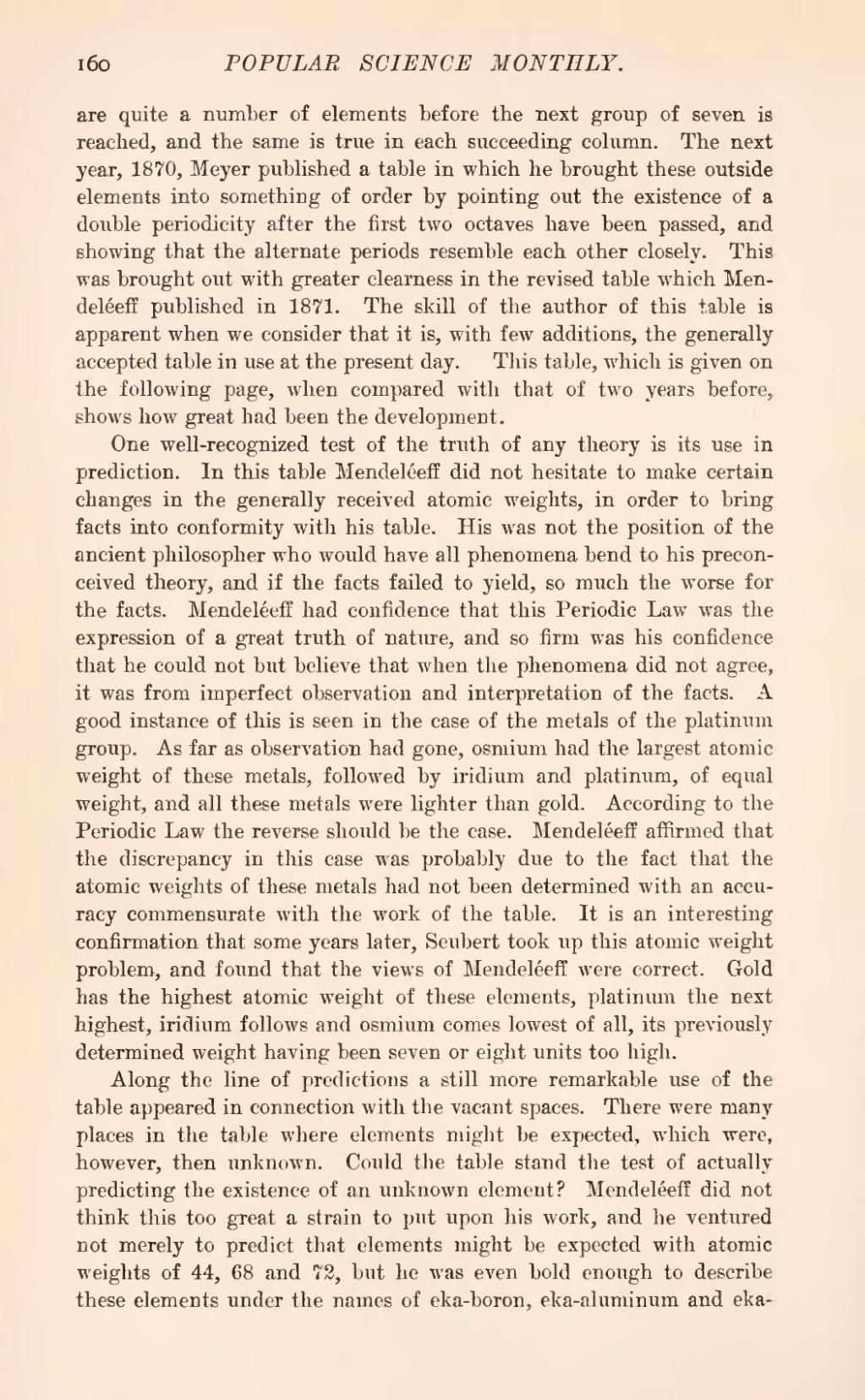are quite a number of elements before the next group of seven is reached, and the same is true in each succeeding column. The next year, 1870, Meyer published a table in which he brought these outside elements into something of order by pointing out the existence of a double periodicity after the first two octaves have been passed, and showing that the alternate periods resemble each other closely. This was brought out with greater clearness in the revised table which Mendeléeff published in 1871. The skill of the author of this table is apparent when we consider that it is, with few additions, the generally accepted table in use at the present day. This table, which is given on the following page, when compared with that of two years before, shows how great had been the development.
One well-recognized test of the truth of any theory is its use in prediction. In this table Mendeléeff did not hesitate to make certain changes in the generally received atomic weights, in order to bring facts into conformity with his table. His was not the position of the ancient philosopher who would have all phenomena bend to his preconceived theory, and if the facts failed to yield, so much the worse for the facts. Mendeléeff had confidence that this Periodic Law was the expression of a great truth of nature, and so firm was his confidence that he could not but believe that when the phenomena did not agree, it was from imperfect observation and interpretation of the facts. A good instance of this is seen in the case of the metals of the platinum group. As far as observation had gone, osmium had the largest atomic weight of these metals, followed by iridium and platinum, of equal weight, and all these metals were lighter than gold. According to the Periodic Law the reverse should be the case. Mendeléeff affirmed that the discrepancy in this case was probably due to the fact that the atomic weights of these metals had not been determined with an accuracy commensurate with the work of the table. It is an interesting confirmation that some years later, Seubert took up this atomic weight problem, and found that the views of Mendeléeff were correct. Gold has the highest atomic weight of these elements, platinum the next highest, iridium follows and osmium comes lowest of all, its previously determined weight having been seven or eight units too high.
Along the line of predictions a still more remarkable use of the table appeared in connection with the vacant spaces. There were many places in the table where elements might be expected, which were, however, then unknown. Could the table stand the test of actually predicting the existence of an unknown element? Mendeléeff did not think this too great a strain to put upon his work, and he ventured not merely to predict that elements might be expected with atomic weights of 44, 68 and 72, but he was even bold enough to describe these elements under the names of eka-boron, eka-aluminum and eka-
